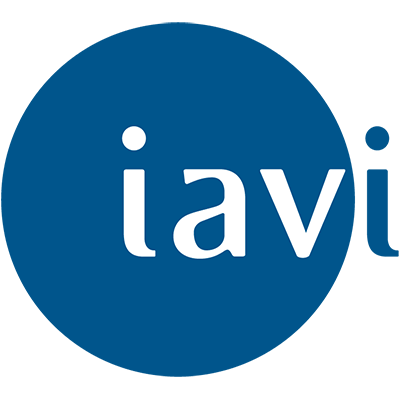预约演示
更新于:2025-11-10
Ad35-GRIN/ENV
更新于:2025-11-10
概要
基本信息
药物类型 治疗性疫苗 |
别名 AD35-GRIN/AD35-ENV |
作用方式 调节剂 |
作用机制 包膜(E)蛋白调节剂、GAG调节剂(糖胺聚糖调节剂) |
在研适应症- |
非在研适应症 |
在研机构- |
权益机构- |
最高研发阶段无进展临床1期 |
首次获批日期- |
最高研发阶段(中国)- |
特殊审评- |
登录后查看时间轴
关联
2
项与 Ad35-GRIN/ENV 相关的临床试验NCT01496989
A Phase 1 Double-Blind, Randomized, Placebo-Controlled Trial to Evaluate Safety and Immunogenicity of a Multiantigen HIV (HIV-MAG) pDNA Vaccine With or Without Human IL-12 pDNA GENEVAX® IL-12) and Ad35-GRIN/ENV Vaccine in HIV-Uninfected, Healthy Volunteers
The purpose of this study is to evaluate the safety, tolerability and immunogenicity of multiantigen HIV (HIV-MAG) plasmid DNA (pDNA) vaccine co-administered with recombinant human IL-12 pDNA (GENEVAX® IL-12) followed or preceded by recombinant Ad35-GRIN/ENV HIV vaccine in low-risk for HIV-uninfected healthy adults.
开始日期2011-12-01 |
申办/合作机构 |
NCT00851383
A Phase I Placebo-controlled, Double-blinded (in Terms of Vaccine or Placebo), Randomized Dose-escalation Trial to Evaluate the Safety and Immunogenicity of Ad35-GRIN/ENV HIV Vaccine in Healthy Adult Volunteers. (IAVI B001)
The purpose of this study is to evaluate the safety and immunogenicity of Ad35-GRIN/ENV HIV vaccine and Ad35-GRIN HIV vaccine administered intramuscularly at 0 and 6 months.
开始日期2009-03-01 |
申办/合作机构 |
100 项与 Ad35-GRIN/ENV 相关的临床结果
登录后查看更多信息
100 项与 Ad35-GRIN/ENV 相关的转化医学
登录后查看更多信息
100 项与 Ad35-GRIN/ENV 相关的专利(医药)
登录后查看更多信息
3
项与 Ad35-GRIN/ENV 相关的文献(医药)2017-01-01·The Journal of infectious diseases2区 · 医学
First-in-Human Evaluation of the Safety and Immunogenicity of an Intranasally Administered Replication-Competent Sendai Virus–Vectored HIV Type 1 Gag Vaccine: Induction of Potent T-Cell or Antibody Responses in Prime-Boost Regimens
2区 · 医学
Article
作者: Karita, Etienne ; Dally, Len ; Lombardo, Angela ; Hironaka, Takashi ; Laufer, Dagna S ; Parks, Christopher L ; Jackson, Akil ; Bergin, Philip ; Gilmour, Jill ; Hayes, Peter ; Fast, Patricia ; Matano, Tetsuro ; Barin, Burc ; Sayeed, Eddy ; Inoue, Makoto ; Nyombayire, Julien ; Omosa-Manyonyi, Gloria ; Park, Harriet ; Shu, Tsugumine ; Bizimana, Jean ; Excler, Jean-Louis ; Kopycinski, Jakub ; Hara, Hiroto ; Cox, Josephine H ; Farah, Bashir ; Gazzard, Brian ; Anzala, Omu
BACKGROUND:
We report the first-in-human safety and immunogenicity assessment of a prototype intranasally administered, replication-competent Sendai virus (SeV)-vectored, human immunodeficiency virus type 1 (HIV-1) vaccine.
METHODS:
Sixty-five HIV-1-uninfected adults in Kenya, Rwanda, and the United Kingdom were assigned to receive 1 of 4 prime-boost regimens (administered at 0 and 4 months, respectively; ratio of vaccine to placebo recipients, 12:4): priming with a lower-dose SeV-Gag given intranasally, followed by boosting with an adenovirus 35-vectored vaccine encoding HIV-1 Gag, reverse transcriptase, integrase, and Nef (Ad35-GRIN) given intramuscularly (SLA); priming with a higher-dose SeV-Gag given intranasally, followed by boosting with Ad35-GRIN given intramuscularly (SHA); priming with Ad35-GRIN given intramuscularly, followed by boosting with a higher-dose SeV-Gag given intranasally (ASH); and priming and boosting with a higher-dose SeV-Gag given intranasally (SHSH).
RESULTS:
All vaccine regimens were well tolerated. Gag-specific IFN-γ enzyme-linked immunospot-determined response rates and geometric mean responses were higher (96% and 248 spot-forming units, respectively) in groups primed with SeV-Gag and boosted with Ad35-GRIN (SLA and SHA) than those after a single dose of Ad35-GRIN (56% and 54 spot-forming units, respectively) or SeV-Gag (55% and 59 spot-forming units, respectively); responses persisted for ≥8 months after completion of the prime-boost regimen. Functional CD8+ T-cell responses with greater breadth, magnitude, and frequency in a viral inhibition assay were also seen in the SLA and SHA groups after Ad35-GRIN boost, compared with those who received either vaccine alone. SeV-Gag did not boost T-cell counts in the ASH group. In contrast, the highest Gag-specific antibody titers were seen in the ASH group. Mucosal antibody responses were sporadic.
CONCLUSIONS:
SeV-Gag primed functional, durable HIV-specific T-cell responses and boosted antibody responses. The prime-boost sequence appears to determine which arm of the immune response is stimulated.
CLINICAL TRIALS REGISTRATION:
NCT01705990.
PloS one3区 · 综合性期刊
A Phase I Double Blind, Placebo-Controlled, Randomized Study of a Multigenic HIV-1 Adenovirus Subtype 35 Vector Vaccine in Healthy Uninfected Adults
3区 · 综合性期刊
ArticleOA
作者: Emmanuel Cormier ; James Ackland ; Peter Hayes ; Patricia Fast ; Hannah Cheeseman ; Eddy Sayeed ; Dilbinder Gill ; Marloes Naarding ; Michelle Cashin-Cox ; Michael C. Keefer ; Jean-Louis Excler ; Natalia Fernandez ; Catherine A. Bunce ; Lottie Hachaambwa ; Burc Barin ; Jill Gilmour ; Josephine H. Cox ; Sabrina Welsh ; Wendy Komaroff ; Lorna Clark ; Devika Zachariah ; Tony Tarragona-Fiol ; Christine M. Hay ; Kelley Loughran ; Jakub Kopycinski
BACKGROUND:
We conducted a phase I, randomized, double-blind, placebo-controlled trial to assess the safety and immunogenicity of escalating doses of two recombinant replication defective adenovirus serotype 35 (Ad35) vectors containing gag, reverse transcriptase, integrase and nef (Ad35-GRIN) and env (Ad35-ENV), both derived from HIV-1 subtype A isolates. The trial enrolled 56 healthy HIV-uninfected adults.
METHODS:
Ad35-GRIN/ENV (Ad35-GRIN and Ad35-ENV mixed in the same vial in equal proportions) or Ad35-GRIN was administered intramuscularly at 0 and 6 months. Participants were randomized to receive either vaccine or placebo (10/4 per group, respectively) within one of four dosage groups: Ad35-GRIN/ENV 2×10(9) (A), 2×10(10) (B), 2×10(11) (C), or Ad35-GRIN 1×10(10) (D) viral particles.
RESULTS:
No vaccine-related serious adverse event was reported. Reactogenicity events reported were dose-dependent, mostly mild or moderate, some severe in Group C volunteers, all transient and resolving spontaneously. IFN-γ ELISPOT responses to any vaccine antigen were detected in 50, 56, 70 and 90% after the first vaccination, and in 75, 100, 88 and 86% of Groups A-D vaccine recipients after the second vaccination, respectively. The median spot forming cells (SFC) per 10(6) PBMC to any antigen was 78-139 across Groups A-C and 158-174 in Group D, after each of the vaccinations with a maximum of 2991 SFC. Four to five HIV proteins were commonly recognized across all the groups and over multiple timepoints. CD4+ and CD8+ T-cell responses were polyfunctional. Env antibodies were detected in all Group A-C vaccinees and Gag antibodies in most vaccinees after the second immunization. Ad35 neutralizing titers remained low after the second vaccination.
CONCLUSION/SIGNIFICANCE:
Ad35-GRIN/ENV reactogenicity was dose-related. HIV-specific cellular and humoral responses were seen in the majority of volunteers immunized with Ad35-GRIN/ENV or Ad35-GRIN and increased after the second vaccination. T-cell responses were broad and polyfunctional.
TRIAL REGISTRATION:
ClinicalTrials.gov NCT00851383.
PloS one3区 · 综合性期刊
A Phase I Double Blind, Placebo-Controlled, Randomized Study of the Safety and Immunogenicity of an Adjuvanted HIV-1 Gag-Pol-Nef Fusion Protein and Adenovirus 35 Gag-RT-Int-Nef Vaccine in Healthy HIV-Uninfected African Adults
3区 · 综合性期刊
ArticleOA
作者: Kilembe, William ; Cox, Josephine ; Syvertsen, Kristen ; Lombardo, Angela ; Dally, Len ; Priddy, Frances ; Zachariah, Devika ; Mpendo, Juliet ; Bourguignon, Patricia ; Hayes, Peter ; Clark, Lorna ; Gilmour, Jill ; Voss, Gerald ; Fast, Patricia ; Ackland, Jim ; Ruzagira, Eugene ; Collard, Alix ; Chomba, Elwyn ; Barin, Burc ; Cormier, Emmanuel ; Roman, François ; Anas, Kamaal ; Omosa-Manyonyi, Gloria ; Laufer, Dagna ; Koutsoukos, Marguerite ; Stevens, Gwynn ; Sayeed, Eddy
BACKGROUND:
Sequential prime-boost or co-administration of HIV vaccine candidates based on an adjuvanted clade B p24, RT, Nef, p17 fusion protein (F4/AS01) plus a non-replicating adenovirus 35 expressing clade A Gag, RT, Int and Nef (Ad35-GRIN) may lead to a unique immune profile, inducing both strong T-cell and antibody responses.
METHODS:
In a phase 1, double-blind, placebo-controlled trial, 146 healthy adult volunteers were randomized to one of four regimens: heterologous prime-boost with two doses of F4/AS01E or F4/AS01B followed by Ad35-GRIN; Ad35-GRIN followed by two doses of F4/AS01B; or three co-administrations of Ad35-GRIN and F4/AS01B. T cell and antibody responses were measured.
RESULTS:
The vaccines were generally well-tolerated, and did not cause serious adverse events. The response rate, by IFN-γ ELISPOT, was greater when Ad35-GRIN was the priming vaccine and in the co-administration groups. F4/AS01 induced CD4+ T-cells expressing primarily CD40L and IL2 +/- TNF-α, while Ad35-GRIN induced predominantly CD8+ T-cells expressing IFN-γ +/- IL2 or TNF-α. Viral inhibition was induced after Ad35-GRIN vaccination, regardless of the regimen. Strong F4-specific antibody responses were induced. Immune responses persisted at least a year after the last vaccination. The complementary response profiles, characteristic of each vaccine, were both expressed after co-administration.
CONCLUSION:
Co-administration of an adjuvanted protein and an adenovirus vector showed an acceptable safety and reactogenicity profile and resulted in strong, multifunctional and complementary HIV-specific immune responses.
TRIAL REGISTRATION:
ClinicalTrials.gov NCT01264445.
100 项与 Ad35-GRIN/ENV 相关的药物交易
登录后查看更多信息
研发状态
10 条进展最快的记录, 后查看更多信息
登录
| 适应症 | 最高研发状态 | 国家/地区 | 公司 | 日期 |
|---|---|---|---|---|
| HIV感染 | 临床1期 | 美国 | 2009-03-01 |
登录后查看更多信息
临床结果
临床结果
适应症
分期
评价
查看全部结果
| 研究 | 分期 | 人群特征 | 评价人数 | 分组 | 结果 | 评价 | 发布日期 |
|---|
No Data | |||||||
登录后查看更多信息
转化医学
使用我们的转化医学数据加速您的研究。
登录
或

药物交易
使用我们的药物交易数据加速您的研究。
登录
或

核心专利
使用我们的核心专利数据促进您的研究。
登录
或

临床分析
紧跟全球注册中心的最新临床试验。
登录
或

批准
利用最新的监管批准信息加速您的研究。
登录
或

特殊审评
只需点击几下即可了解关键药物信息。
登录
或

生物医药百科问答
全新生物医药AI Agent 覆盖科研全链路,让突破性发现快人一步
立即开始免费试用!
智慧芽新药情报库是智慧芽专为生命科学人士构建的基于AI的创新药情报平台,助您全方位提升您的研发与决策效率。
立即开始数据试用!
智慧芽新药库数据也通过智慧芽数据服务平台,以API或者数据包形式对外开放,助您更加充分利用智慧芽新药情报信息。
生物序列数据库
生物药研发创新
免费使用
化学结构数据库
小分子化药研发创新
免费使用


